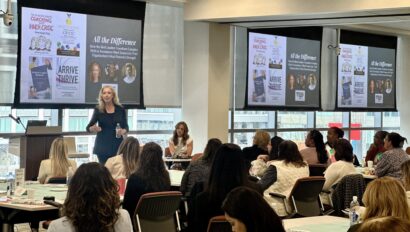Research & Insights

Beyond the business case for inclusive leadership
For as long as I’ve been involved in conversations about diversity, equity, and inclusion (well over a decade), we’ve been talking about the business case and whether it matters. Today when I talk with people engaged in this work, I hear everything from “It’s absolutely critical to start conversations with senior leaders by presenting the business case for inclusive leadership” to “I don’t waste my time talking to people who don’t already understand why this is important.” As with so many aspects of this work, I think the answer lies somewhere in between and is different depending on the context.
There is indeed a business case
Robin J. Ely and David A. Thomas recently updated their work on this subject with an article in Harvard Business Review called Getting Serious About Diversity: Enough Already with the Business Case. Their findings, based on sound evidence, continue to show that cultivating what they call a “learning orientation toward diversity” leads to higher quality work, better decision-making, and greater team satisfaction, and enables companies to increase their effectiveness.
Enough already with the business case
However, as the authors note, the glacial pace of change suggests that the business case, as it is usually presented, isn’t compelling enough to actually create change. And perhaps more importantly, it generally ignores the critical role of inclusive leadership. As Ely and Thomas state:
Taking an “add diversity and stir” approach, while business continues as usual, will not spur leaps in your firm’s effectiveness or financial performance. Increasing diversity does not, by itself, increase effectiveness; what matters is how an organization harnesses diversity, and whether it’s willing to reshape its power structure.
It’s really about increasing effectiveness by harnessing diversity
Since diversity by itself isn’t enough, Ely and Thomas identify four actions that enable leaders to increase their effectiveness:
- Build trust
- Actively work against discrimination and subordination
- Embrace a wide range of styles and voices
- Make cultural differences a resource for learning
These actions map neatly to our model of The Work of the Inclusive Leader™, which provides a roadmap for embracing these and other critical actions that allow leaders to realize the benefits of a diverse and inclusive workforce. Our new Inclusive Leader’s Playbook also provides practical suggestions for implementing these actions.
Going beyond the business case
I agree wholeheartedly with Ely and Thomas’s concluding statement that they are “disturbed by the implication that there must be economic grounds to justify investing in people from underrepresented groups. Why should anyone need an economic rationale for affirming the agency and dignity of any group of human beings?”
That said, I’ll let my former colleague, Deborah M. Kolb, professor emerita of Simmons University, have the last word. She always made the point that if you believe that having more diversity improves the overall quality of leadership, then taking these steps is obvious. If you don’t, then providing equal opportunities to people of all social identities allows you to greatly increase your talent pool. Either way, engaging in the Work of the Inclusive Leader can only be seen as a win.
Watch the recordings from our Inclusive Leadership in Action Webinar Series:
Becoming Aware [Recording & Moderator Insights]
> How to get clear on your own values and blindspots, and learn more about the experiences, needs and concerns of others.
Becoming an Ally and Upstander [Recording & Moderator Insights]
> How to partner with others to support their success, and create conditions that allow everyone to feel that they belong.
Becoming a Change Agent [Recording & Moderator Insights]
> How to sponsor people from underrepresented groups and make changes in how work gets done so that everyone has equal access to opportunities.




